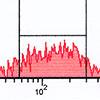We’re proud to continue the tradition of standardization in flow cytometry that our predecessor Flow Cytometry Standards Corporation began, and to contribute our expertise in the development and manufacture of specialty microsphere products. We invite you to check out our new blog and to browse our library of technical documents, tutorials, and useful links. If any questions remain unanswered, please feel free to submit a question to Ask The Doc or give us a call—we are happy to help!
Quantitative Cytometry brochure
Flow Cytometry Quality Assurance / Quality Control brochure
Flow Cytometry Basics
Flow Cytometry Quality Assurance / Quality Control brochure
Flow Cytometry Basics
For more information, see our flow tutorial page or our entire library in Tech Support






